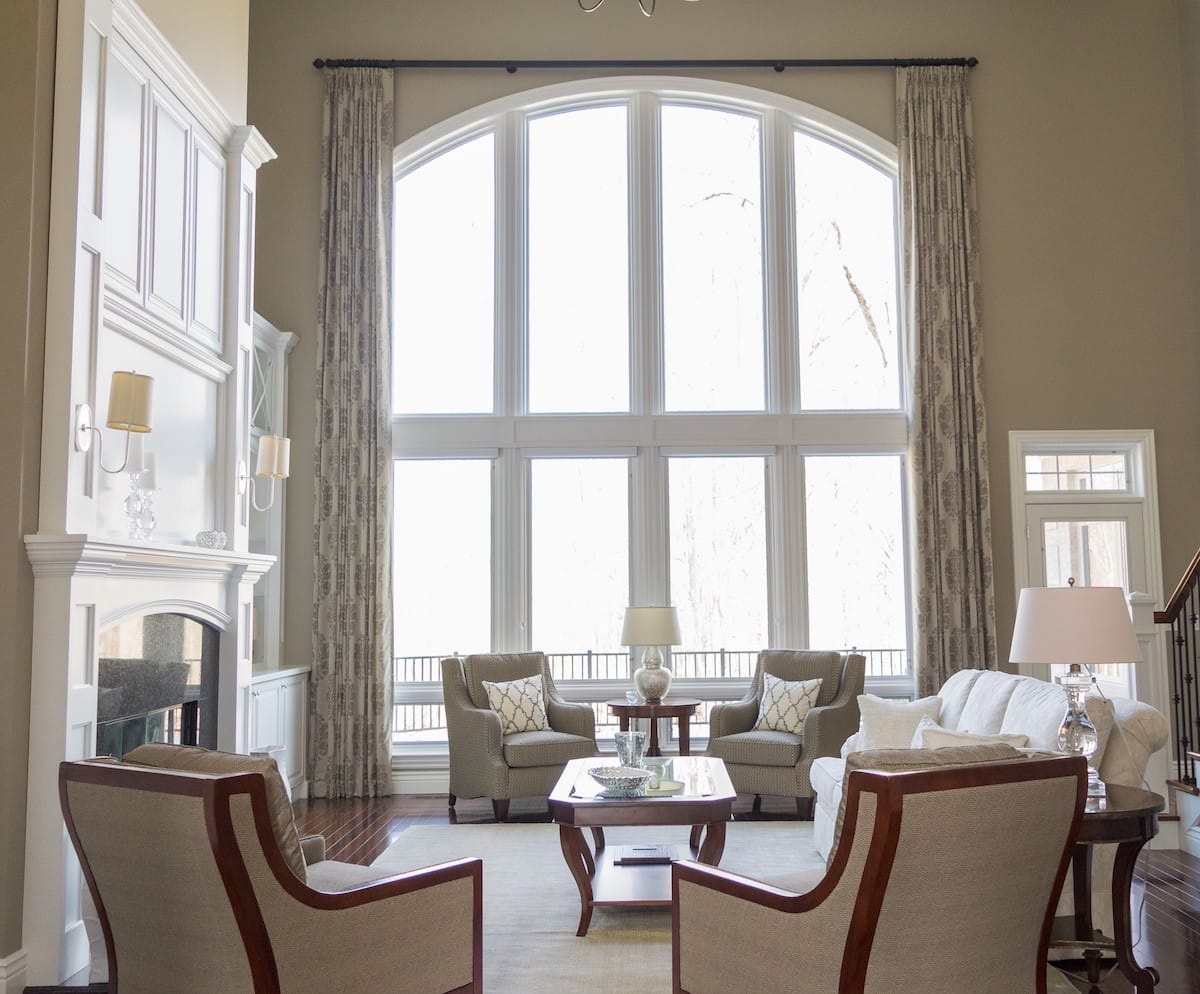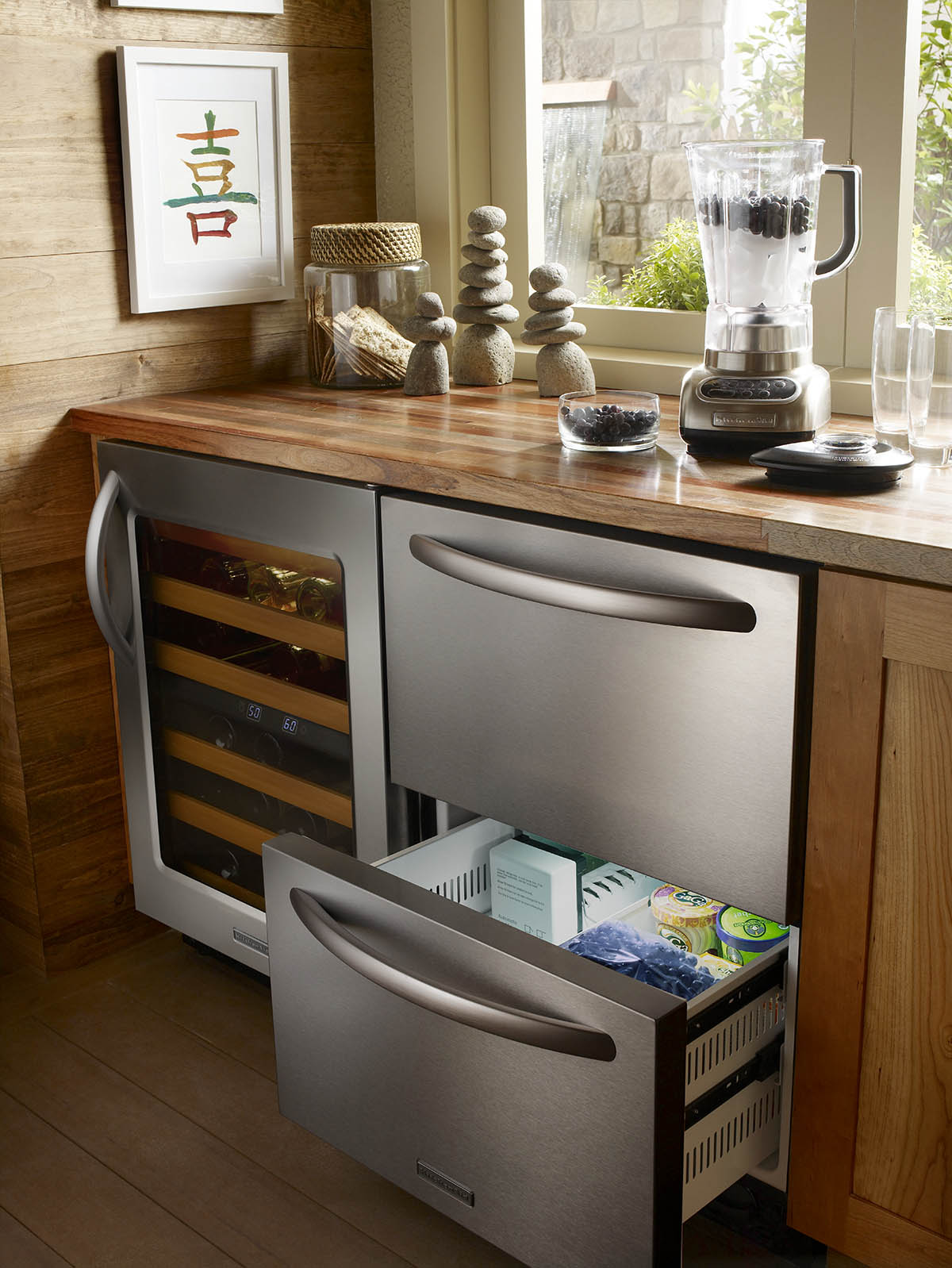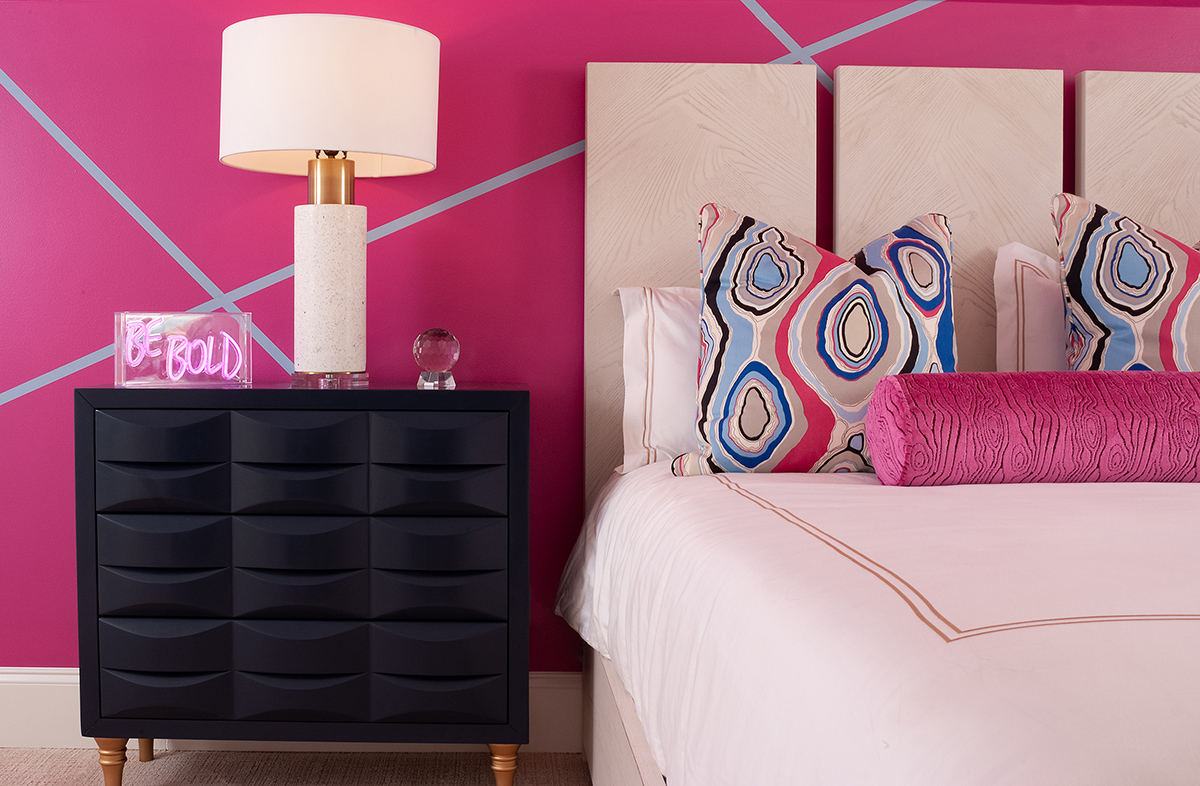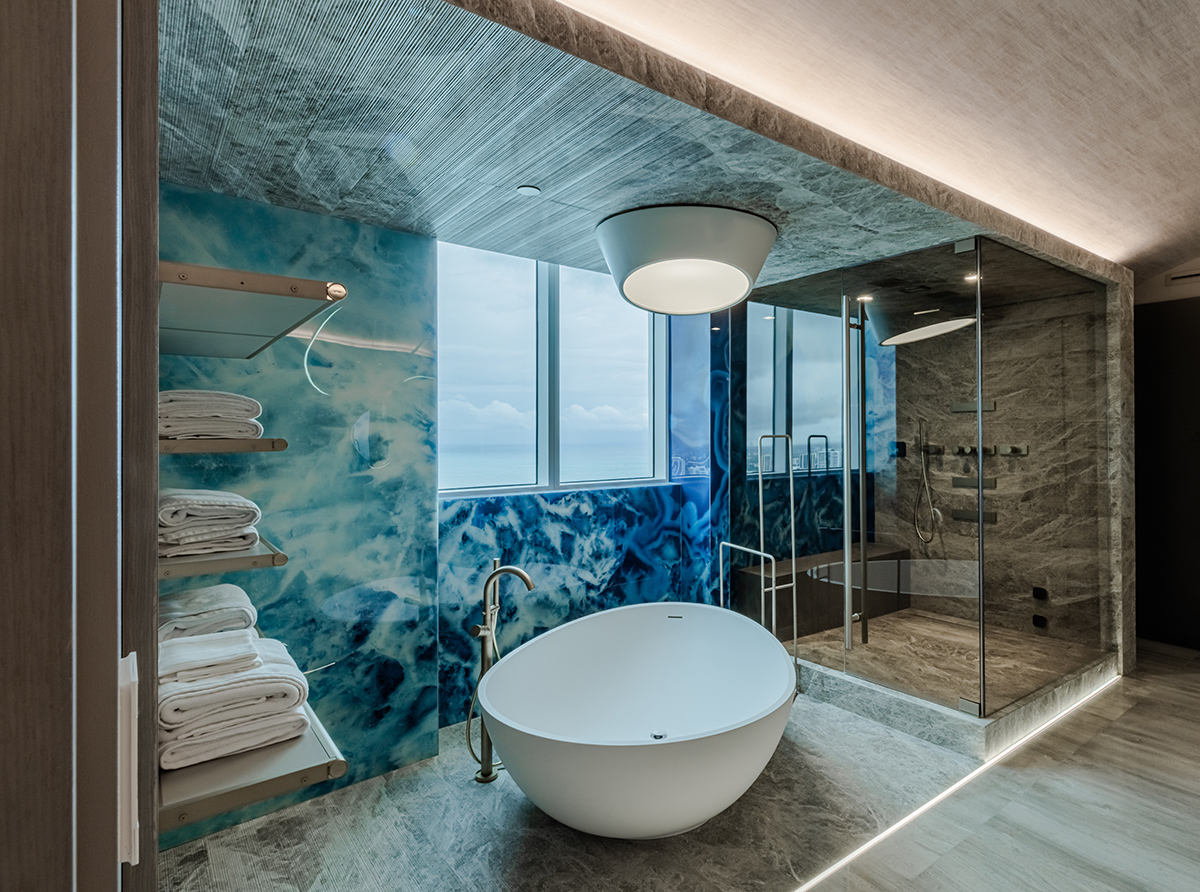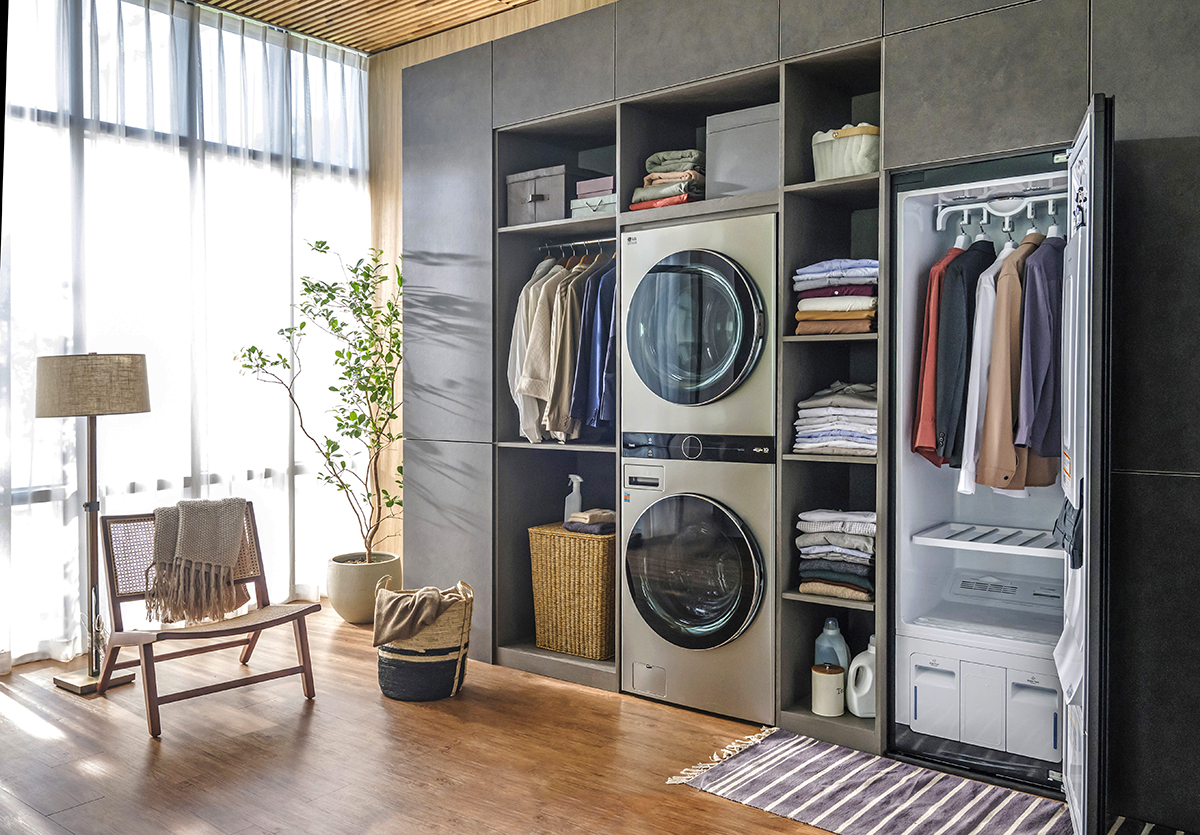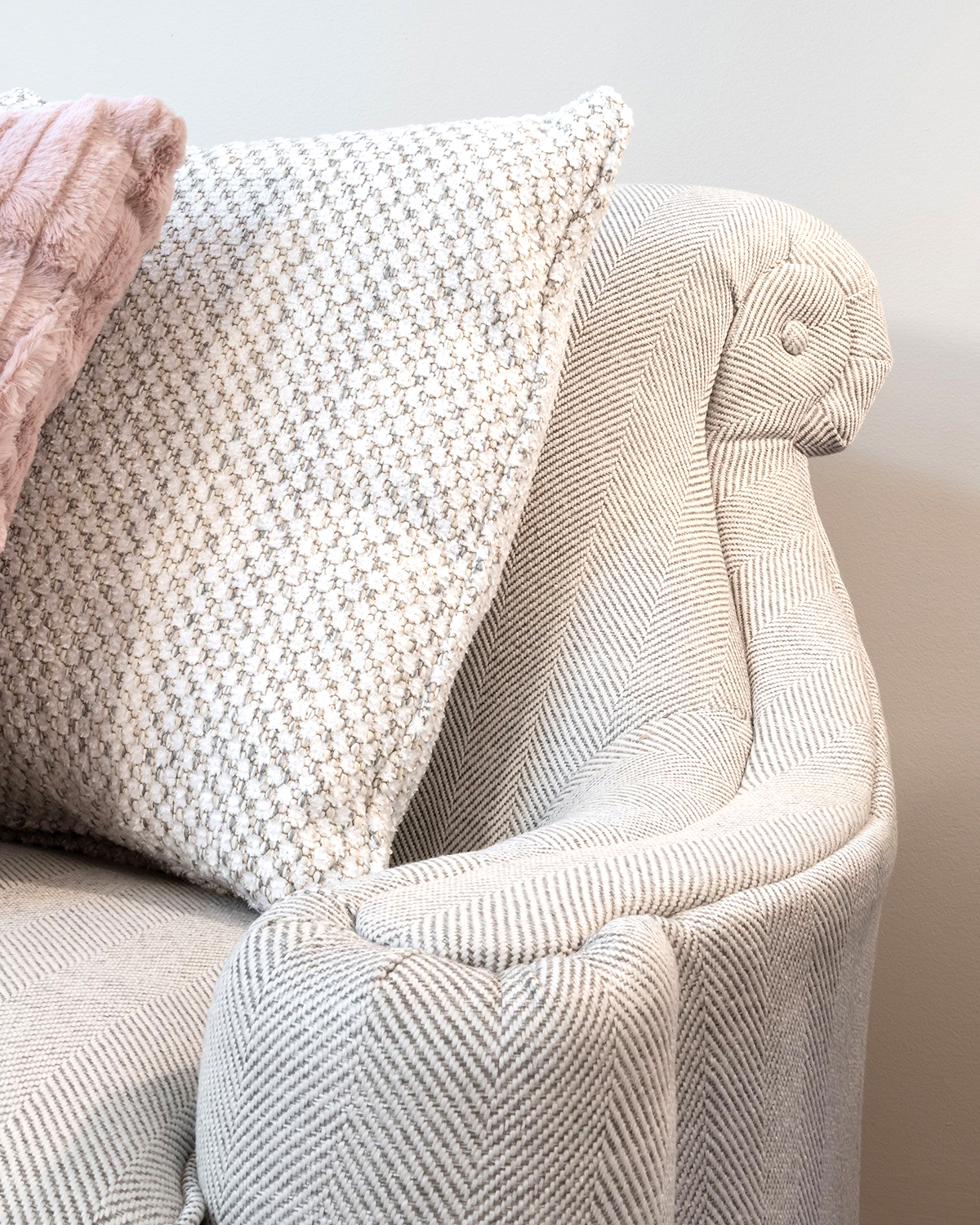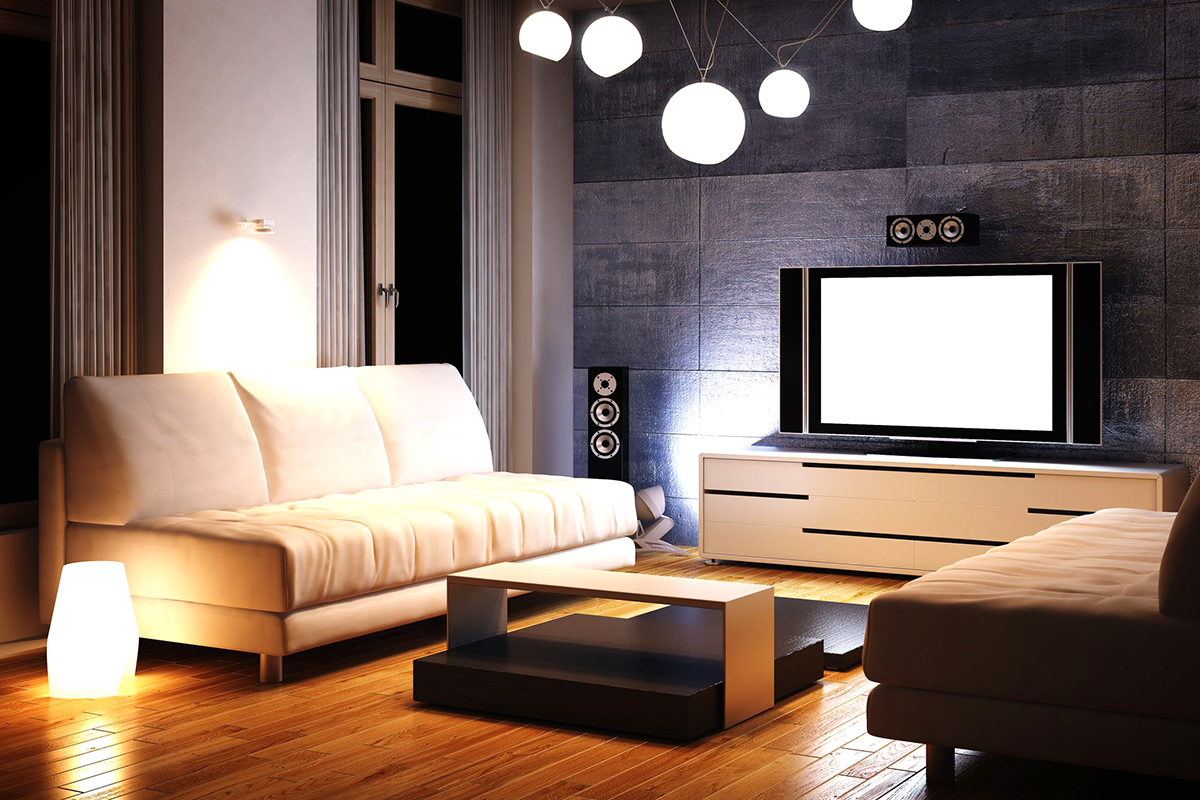WRITER | CAROL SOBIESKI-GALL
PHOTOS | CREATIVE INTERIORS
Imagine … soft sheer shades layered with luxurious embroidered draperies, flowing gracefully from dainty metal rings on rods that are neatly fitted with crystal finials … a beautiful room complete with exquisite window coverings! What takes ordinary to excellent? Excellent to exquisite?
New clients often tell me, “We are so confused! There are so many choices!” And to that, I respond, “I know, but this is a good thing, because we have options that will fit your home.”
Window transformation is often a combination of shades and soft treatments. The first step is the practical control of privacy, security, sunlight, street lights, and insulation. Any of these are easily achieved with a shade that is functional while complementing the overall décor. Shades can enhance a beautiful view or mask an undesirable one. When discussing blinds and shades, it’s best to ask yourself the question, “Do I prefer to completely open the shade to a bare window, or would I rather have something covering the window but still be able to see outside?” Shades that roll neatly into a cassette or head rail are best for an open view. Translucent shades, horizontal blinds, Silhouettes (Hunter Douglas), and sheer draperies can soften the intrusion from outside and quiet the indoor space. Roller shades with clean, simple lines lend a contemporary flair. Other details to consider when selecting a shade include the mounting style (inside or outside the trim), control style (corded vs. noncorded), opacity (ability to block light), color, texture, and the size of the shade when it is fully opened. It’s best to work with your designer to define the challenges together and determine the best solutions.
For some settings, shades alone are enough to transform the window. For others, that might not be enough. The second step is to add soft treatments such as draperies, valances, and cornices while considering how they will relate to the overall space. In the early 1990s, draperies were a “thing of the past.” But like all changing fashion trends, they are now very much a “thing of the present.” Custom drapery panels top the sales charts year after year. They are practical, beautiful fabrics are readily available, and their overall impact can change a room. Draperies can effectively block light, create privacy, absorb sound, and add warmth and softness to a space. Through the years, materials available have gone from few and simple to almost overwhelming. Fabrics were flat, woven, and printed on the surface. Now they are finely woven, heavily textured, and embroidered. Even fabrics such as tapestry and chenille are used.
Layering simple, full-length draperies in a color slightly lighter or darker than the wall can soften crisp lines and frame a view. Changing the fabric to a bold color or pattern will make a statement and add drama. If you want to go all of the way to exquisite with your window treatments, use finely woven and embroidered fabrics and add textile trims and finely crafted hardware. The overall process from design to fabric selection to fabrication and installation can be very rewarding. It is exciting to see the finished product complete a room. Sometimes it is hard for me to believe that I have the opportunity to work with such beautiful materials and talented craftsmen to create the effects that my clients desire. This is every designer’s dream!
Estimating the cost of shades and blinds is fairly quick and simple due to the use of standardized charts. On the other hand, custom soft treatments can include many options that affect the price, including fabric selection, trim, hardware, and labor. A constructed upholstered cornice would be more costly than a free-hanging, tailored valance, but both could achieve a similar look. Fabrics can range in price from $40 to $200 or more per yard. The cost of decorative hardware depends on the size, style, type, and quality. The use of trim adds to the cost of the product as well as the labor to apply it. Work with your designer to determine the best combination of functionality, visual appeal, and cost.
Whether your goal is to enhance a lovely view, minimize solar damage to your furnishings, create privacy, absorb sound, or beautify your room, the possibilities are endless.


